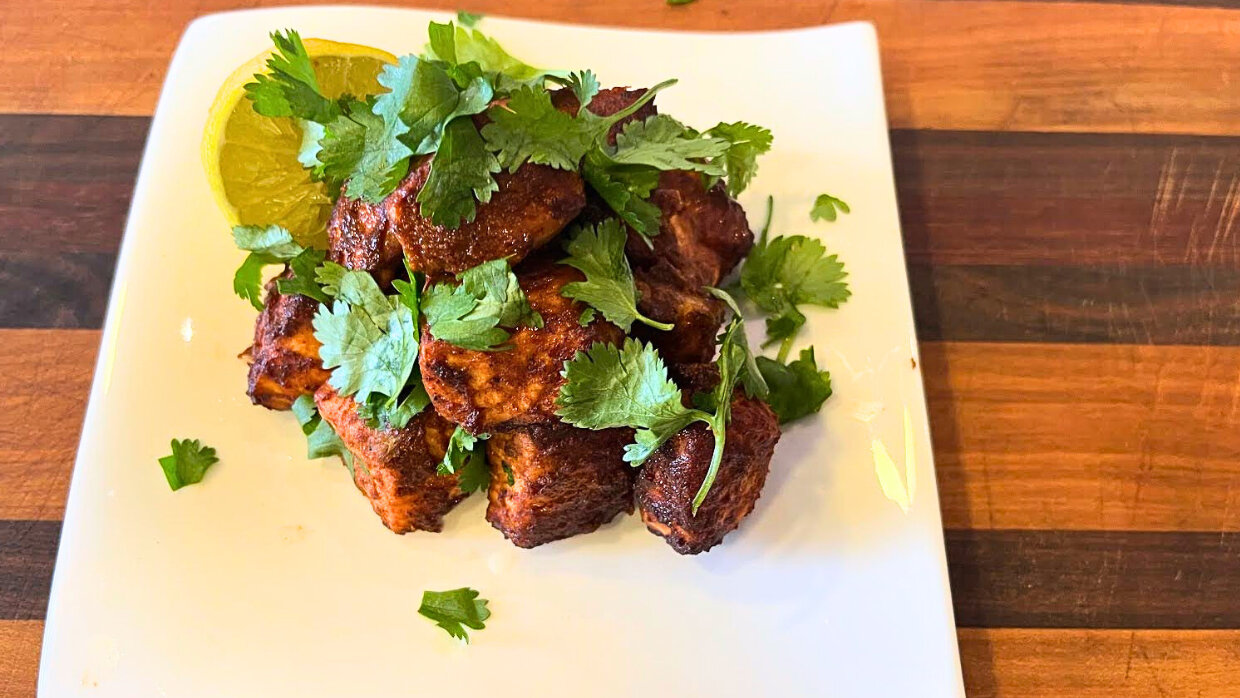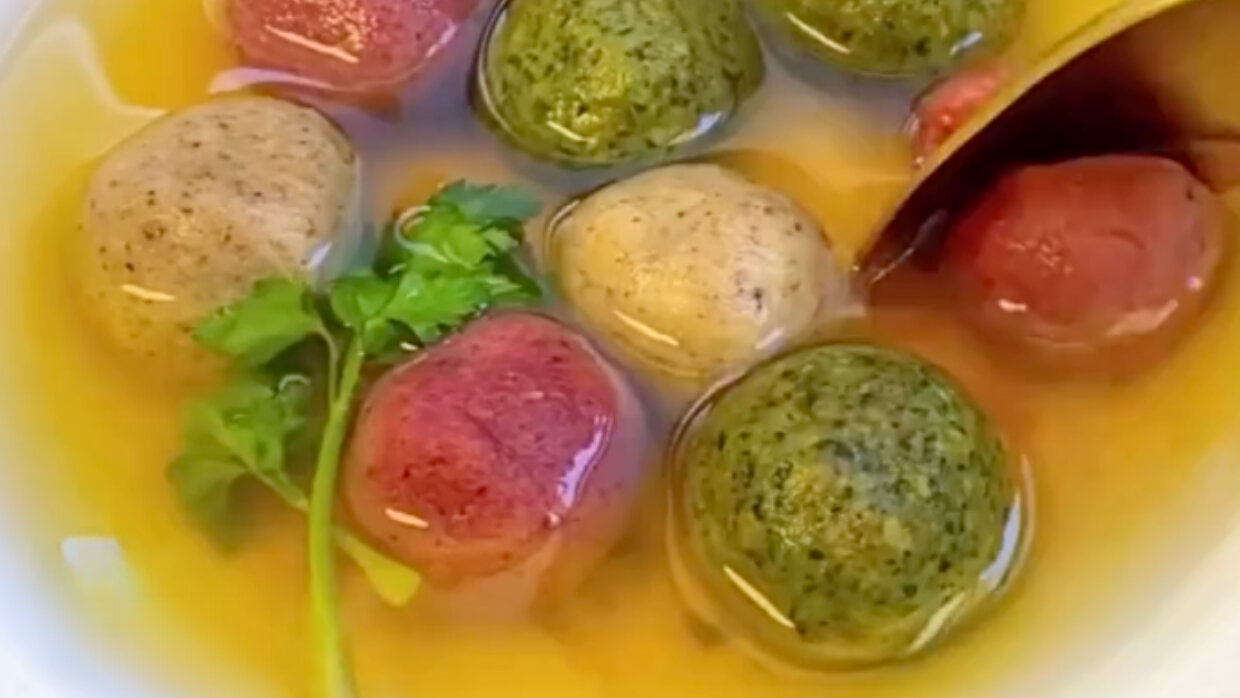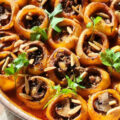When Jews were dispelled from our ancient homeland, some Jews of the Diaspora went northwest to Europe and encountered carbohydrates, and other Jews went South and East and encountered spices.
And thus Ashkenazi and Sephardi cuisines were born.
Today, we’re focusing on what our European ancestors cooked up through the generations.
The Jews of Europe lived primarily in the cold-weather climates of Eastern and Central Europe, Germany, Poland, Russia. They were largely peasants of little means and little sustenance.
They gave birth to significant Torah giants and culinary creativity. To taste these dishes is to understand some of the plight, resilience, and genius of Jewish cooks throughout the ages of harsh shtetl living.
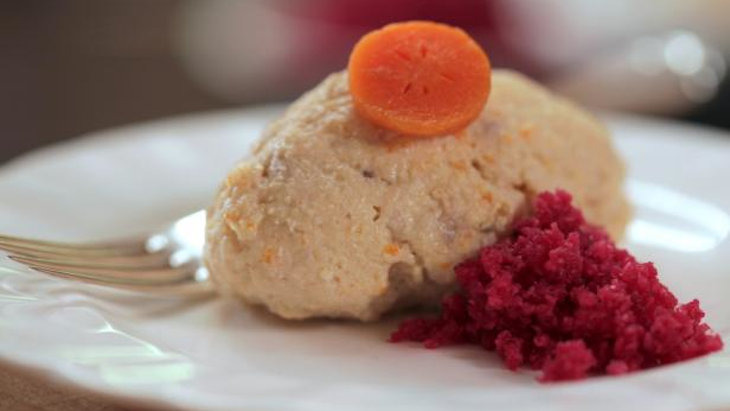
Take gefilte fish for example. You would be hard-pressed to find gefilte in an aquarium, and that’s because its origins as a ground up mixture of cheaper kosher fish made it ideal for Jews of a different era to turn their poverty into something tasty. Something out of nothing, some might say, a Jewish answer for many occasions.
Gefilte means stuffed in Yiddish, and gefilte fish kicks off our Ashkenazi “stuffed foods” category. Originally, gefilte fish was ground up pike or carp stuffed back into the fish, eaten with a heavy serving of chrein, horseradish mixed with beets.
Stuffing foods with other foods is a Jewish specialty and often comes with symbolic meaning. For Ashkenazi Jews, kreplach, basically Jewish meat ravioli, are traditionally served before Yom Kippur and on Hoshana Rabbah and Purim, reminding us of the hidden miracles and mercy God performs and has for us.

Next up in the stuffed foods department is stuffed cabbage. Stuffed cabbage is not completely unique to Ashkenazi Jews, as it was believed to be brought to the shtetls of Europe by our Sephardi cousins, but how you stuff your cabbage is largely determined by your ancestors' village of origin.
The Jews of Eastern Europe (think Russia and Poland) were likely introduced to stuffed cabbage by the Tartars of Turkey during the 16th century. The Jews of Central Europe (Hungary, Lithuania) learned about the recipe from separate Turkish influences as well. The dish was named after the dove, because our European ancestors thought it looked like a bird's nest. Russians call the dish golubtsi (galub meaning dove), Ukranians use the root halub, also meaning dove.
Stuffed cabbage was often saved for special occasions, likely because money for meat was understandably limited. Nowadays, stuffed cabbage is still considered a holiday food, passed down from these very ancestors.
We cannot discuss Ashkenazi cuisine without a strong focus on the tuber that held generations together— the potato.

Potato kugel and potato latkes have been a source of Ashkenazi Jewish pride and joy through eons of shabbat and holiday meals. Potato kugel became all the rage around the same time cholent made its way to Eastern Europe.
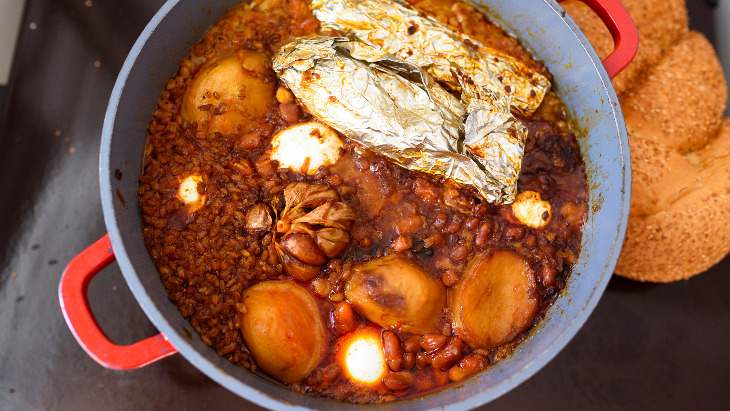
Overnight, slow-cooked stew is a complete Jewish staple. Regardless of where the Jews lived, they needed to find a way to eat cooked, warm food on shabbat. The Torah prohibits kindling a fire and cooking on shabbat. So slow-cooked variations of shabbat day food were created throughout the diaspora.
Cholent was the Eastern European variation of the shabbat day meal. Potato kugel started off as the natural accompaniment to shabbat cholent. In a time before potato kugel was a baked dish, it was placed on top of the cholent pot to cook for the day meal.
Potato kugel at this time was cooked in a kugeltopf, an old Germanic term for an earthenware pot. Eventually, the term kugel was extrapolated to describe a wide range of Ashkenazi casserole dishes.
Potato latkes similarly have a historical tale to tell. While latkes have been cooked to remind us of the miraculous long lasting oil of Hanukkah, the latke of choice originally was a cheese latke. Potato latkes did not come on the scene until the mid-1800s, when a wide range of crop failures led desperate, starving farmers in Poland and Ukraine to turn to planting potatoes for survival.
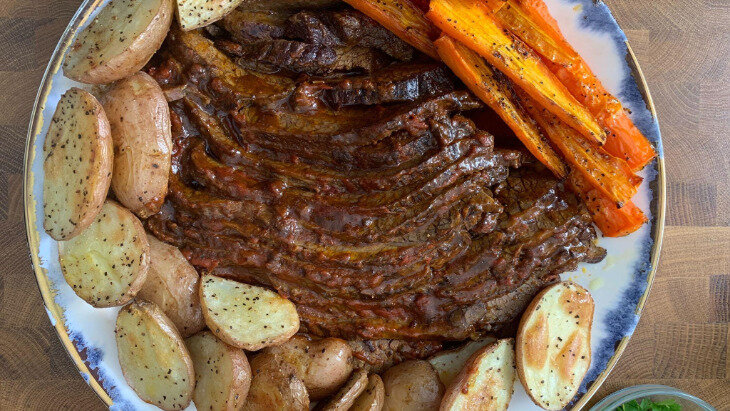
Fighting for survival has led to culinary escapades in the world history of Jews. Brisket is a prime example of poor Jews necessity for inexpensive cuts of meat turned into a special occasion delicacy. Long before Texans claimed brisket for their own, Ashkenazi Jews were slow cooking the flavor into this tough cut of meat.
Cheap, delicious, and can feed a crowd— the recipe for the perfect shtetl dish. Matzah ball soup is another relatively recent Ashkenazi invention. Like potato latkes, the matzah ball, made from matzah created as Moses led the Jews out of slavery in Egypt, only made its way into soup during the 1800s.

Ashkenazi cooking ingenuity didn’t end with potatoes and cheap meats spruced up. Dessert was always accounted for as well. From rugelach to teiglach, babka to kichel, Jewish home pastry chefs of yore had a way to turn little bits of dough into sweet delights. With the addition of simple ingredients like honey, our bubbies discovered how to turn the basic and bland into finger-licking treats.
While Ashkenazi Jews originated in Europe, some Ashkenazi delicacies truly didn’t take shape until the shtetl immigrated to the Big Apple. The knish, modern day pastrami sandwiches, and bagels and lox were all New World developments produced by Ashkenazi immigrants scraping by in New York City.
Ashkenazi Jews have cooked their history into every dish. Every spoonful tells a story we get to learn, share, and enjoy from place to place, generation to generation.








